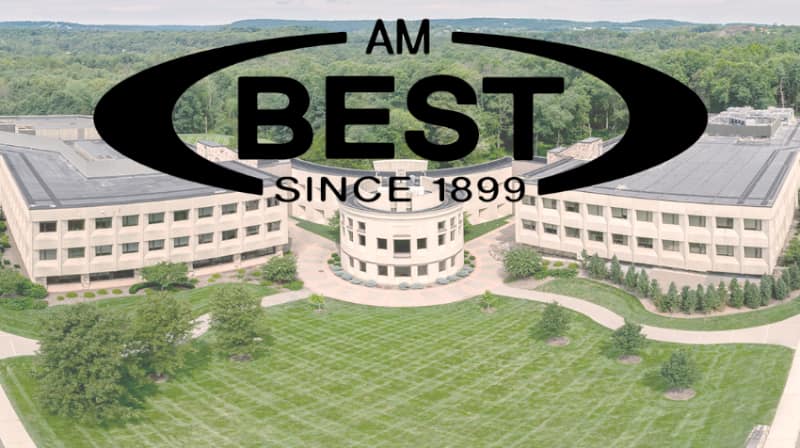AM Best turns positive on reinsurance sector, says ILS now a strategic partner

AM Best has now upgraded its outlook on the global reinsurance sector from stable to positive, the first time it has had a positive outlook on the market for well over a decade.
In the past, the rating agency had repeatedly cited the competitive threat that insurance-linked securities (ILS) capital posed as a negative for reinsurers, but now the agency notes that ILS is viewed more as a strategic partner than something to fear.
In improving its outlook on the global reinsurance sector, AM Best highlights robust reinsurance profit margins, something that the ILS market and its investors have also enjoyed over the last year or so.
In addition, AM Best also highlights the much-improved attachment points, terms and conditions that reinsurance arrangements are now underwritten with, as key drivers for its move to a positive outlook.
AM Best had turned negative on the global reinsurance market outlook back in August 2014, as we reported at the time, then improved its outlook to stable in December 2018, as our sister publication Reinsurance News reported.
Before 2014 the outlook was stable again, so it’s now much more than a decade since reinsurance conditions and market performance was strong enough for the rating agency to view the prospects of the reinsurance sector positively.
Even though reinsurance pricing has now decelerated from the rapid hardening we had seen over the last two years, AM Best says “underwriting discipline is being maintained and profit margins remain healthy enough to absorb higher loss activity than recently experienced.”
Of course, it’s not just that profit margins are healthy, the updates to attachment points and terms are key in how traditional reinsurers, and ILS funds, are now better able to absorb catastrophe losses without such overly significant hits to their profitability as we saw in the past.
“Demand for coverage remains strong due to heightened natural catastrophe loss activity and general economic uncertainty,” explained Carlos Wong-Fupuy, senior director, AM Best. “We also considered the expectations of a slower reduction in interest rates than originally anticipated, which are likely to support strong returns in the short term.”
Underwriting margins are both improved and more stable thanks to the actions taken to improve the terms at which reinsurance capital is deployed.
AM Best cites various actions “aimed at tightening terms and conditions, with a diminished appetite for aggregate protection, focus on named perils, shift from proportional to excess of loss covers, and a sharp increase in attachment points.”
At the same time, the market is expanding its underwriting portfolios, as reinsurance market pricing and terms are conducive to do so, with the rating agency citing higher rates, a continued flight to quality and increased demand for protection.
In addition, even though reinsurer loss ratios took a hit in the first-quarter, not least from the Baltimore bridge collapse, AM Best notes that “underwriting margins and annualized ROEs remain strong.”
Where in the past, when opining on the reinsurance market outlook, AM Best might have pointed to alternative capital and ILS as providing stiff competition for reinsurers, the rating agency has softened that view considerably in 2024.
“ILS previously was seen as a direct competitor to rated balance sheets, but is now perceived as more of a strategic partner,” the rating agency explained. “This is particularly true given the ILS segment’s focus on the most remote layers, as well as retro capacity needed to support traditional reinsurers’ risk appetites.”
In addition, AM Best does not see any major threats coming from new reinsurance start-ups, saying it considers the emergence of “disrupting entrants unlikely.”
“Despite the attractive returns experienced in recent periods, we do not foresee any significant new entrants to the market. Well-respected management teams have been unable to raise capital to set up the new start-ups that we would have seen in prior hard market cycles. This lack of disruption by new entrants enables the preservation of discipline by seasoned players still recouping losses from previous years,” AM Best reports.
Private equity investors are shying away from start-up risk it seems, while also perhaps beginning to exhibit a lack of desire to fund start-ups that in recent years have just perpetuated the same old status-quo in the sector.
Instead, select major reinsurers are still able to attract new capital, AM Best notes.
The rating agency added, “Investors are more likely to allocate new funds either in rated balance sheets with scale and a proven track record or, opportunistically, in ILS structures where liquidity is critical.”
Positively, while reinsurance rates are decelerating at the mid-year renewals and there may be “early signs of softening at the highest layers in the protection tower,” AM Best said it “believes that the de-risking measures put in place in the last few years are unlikely to be loosened.”
Adding that, “This factor, combined with few new entrants, makes the preservation of underwriting discipline more likely than not.”
Wong-Fupuy concluded, “AM Best believes that the exceptional returns on equity experienced in 2023 are unlikely to be repeated at such a high level, but expects reinsurers to focus on underwriting discipline in the near term.”






